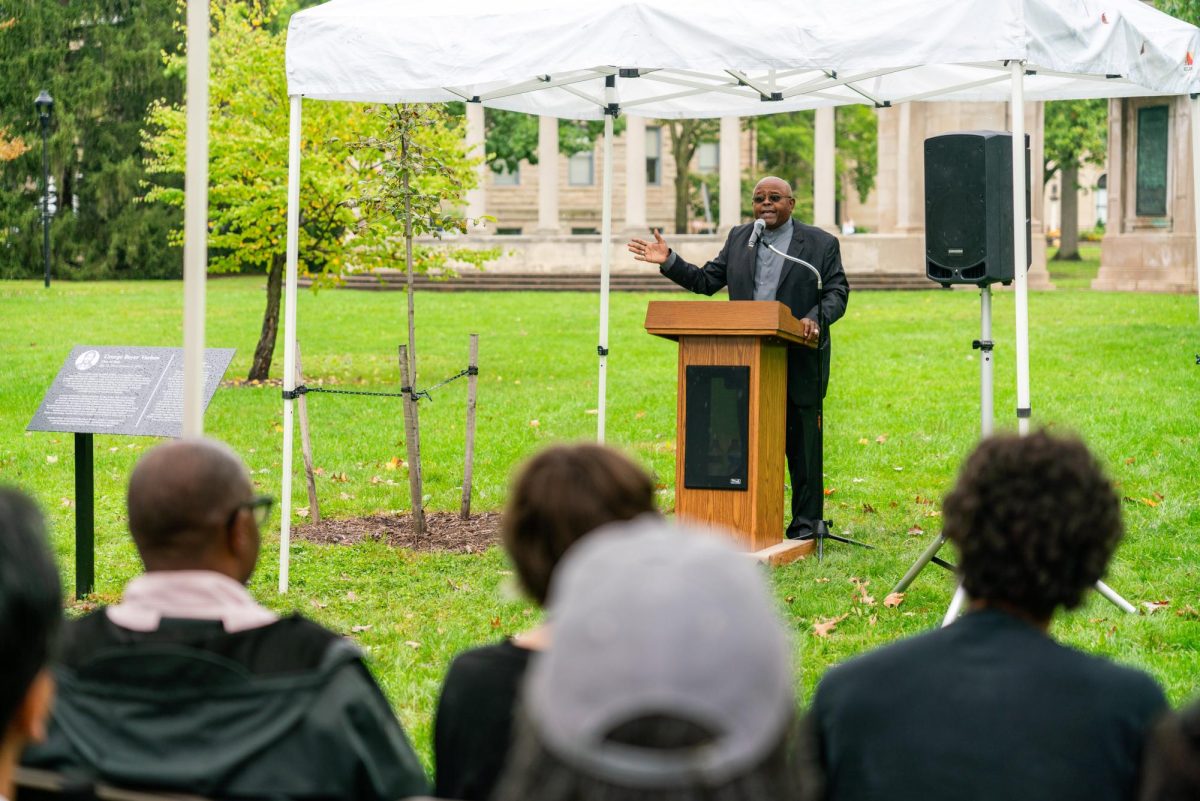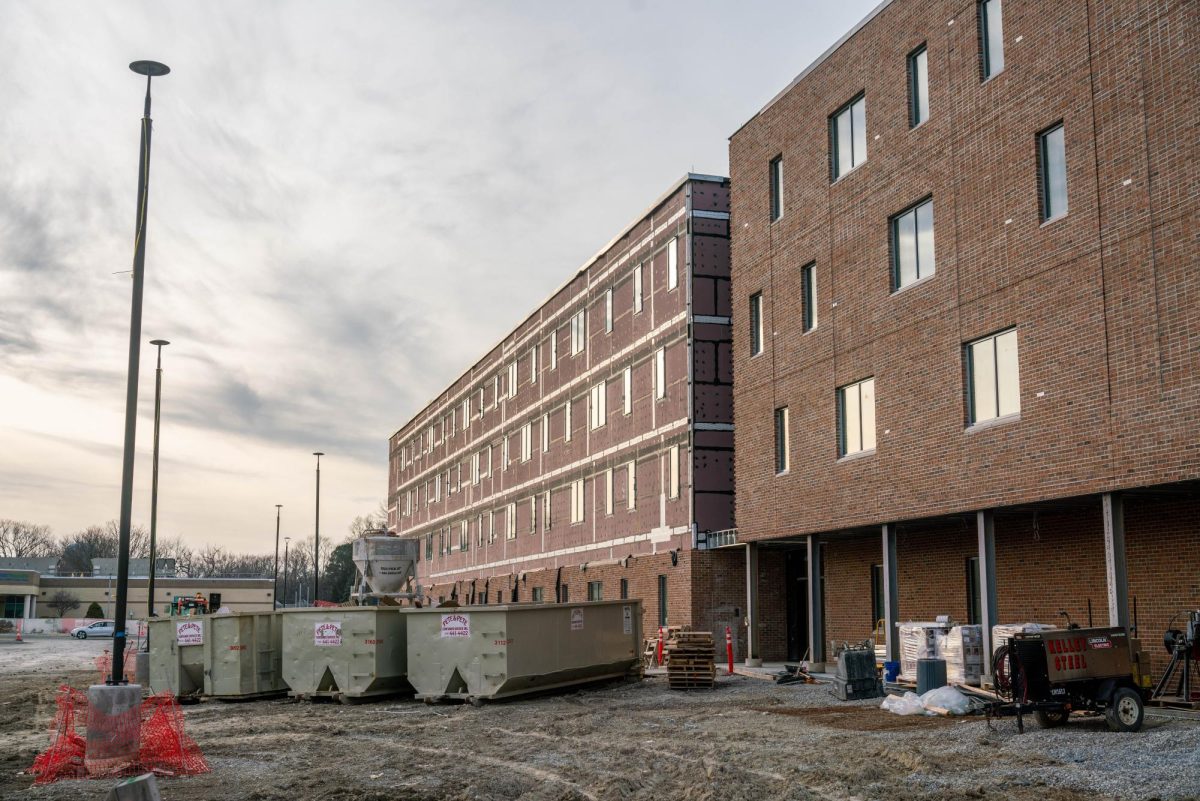During Homecoming weekend, Oberlin College held a dedication ceremony in Tappan Square to honor the life of George Boyer Vashon, OC 1844, the College’s first Black graduate. The College placed a plaque near a tree that was planted and dedicated in May to honor Vashon’s enduring legacy.
Vashon graduated as class valedictorian in 1844 at age 20. After graduation, Vashon achieved remarkable success in law and academia. He became the first Black lawyer in New York and was instrumental in the founding of Howard University, where he served as the first Black professor.
The ceremony was held in large part with the help of Vashon’s great-great-grandson Paul Thornell. Thornell was touring colleges in Ohio with his son, searching for the right fit. As part of their trip, they made a detour to Oberlin College. While exploring the campus, Thornell expected to find some form of commemoration for Vashon, given the historical impact his ancestor had on the school. However, he was struck by the absence of any visible recognition.
“I had it in the back of my head that there would probably be something recognizing him, and I didn’t see it,” Thornell said. “I think that’s often the case you have with many accomplished figures in Black history and American history that have not been recognized or their stories have been forgotten.”
Motivated by this realization, Thornell reached out to Oberlin College President Carmen Twillie Ambar.
“A year ago, I wrote a letter to President Ambar to see if she would be open to recognizing his accomplishments around the time of [the] 200th anniversary of his birth,” he said. “She could not have been more accommodating, excited, interested, focused, but also intentional.”
A.G. Miller, associate professor of Africana Studies and Religion emeritus, was a speaker during the dedication ceremony, and emphasized the importance of recognizing figures like Vashon.
“With the assault on diversity, equity, and inclusion, we need to stand in full opposition to that and to highlight, and not diminish, the work and role of Black people and other folks of color and women and others who have made enormous contributions to what America is about,” Miller said. “[Vashon] represents the whole spirit of Oberlin as a student and then as an alumni.”
For alumni like Bill Bradford, OC ’76, who attended the dedication ceremony, this recognition carries deep meaning.
“I think [Vashon] started a gateway to what was to come later,” Bradford said. “To see something like this, it means a lot to me — not only myself, but I’m sure a lot of the other African American students who are on this campus right now.”









